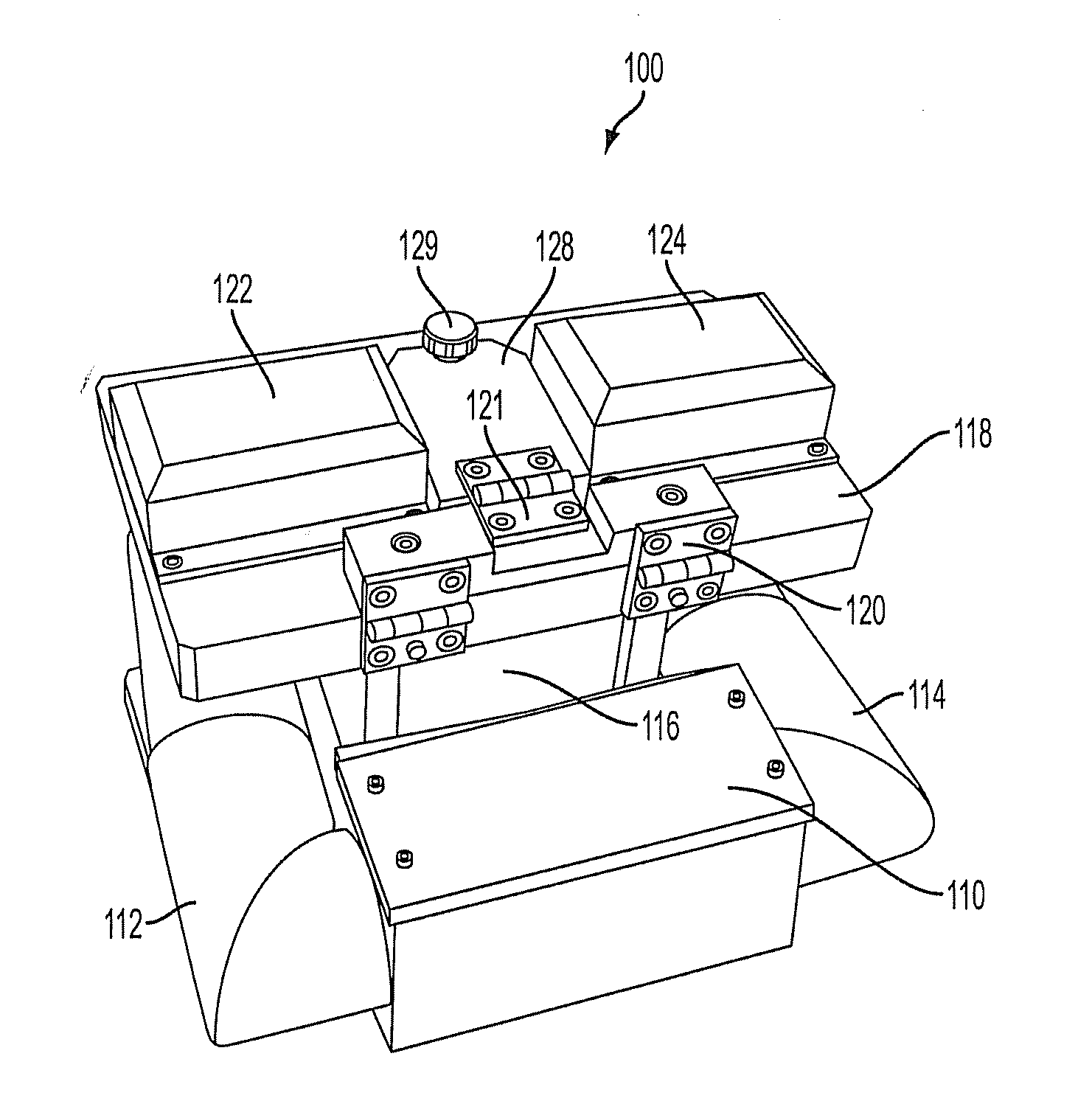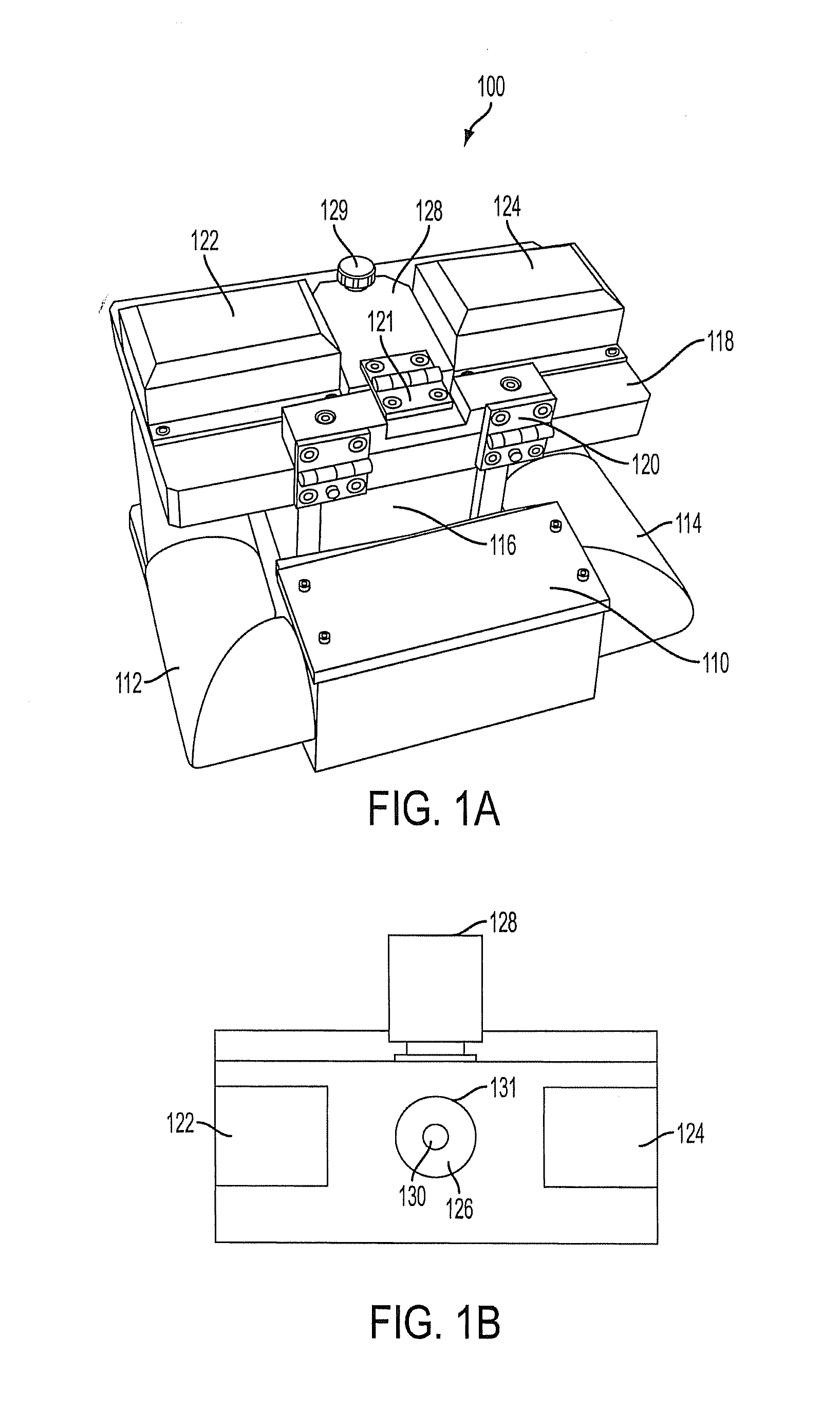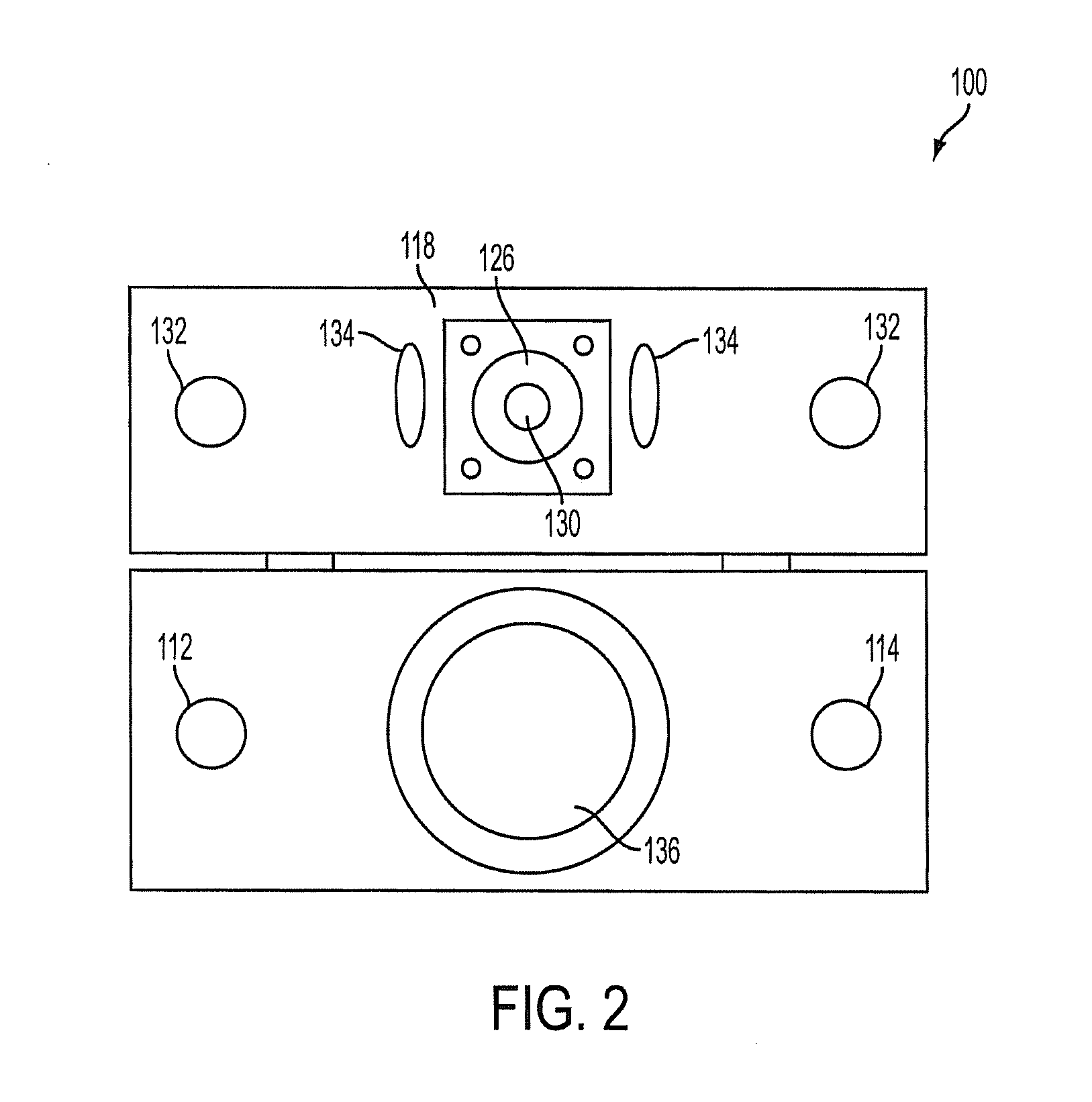Breastmilk Handling Apparatus Particularly Useful for Warming of Breastmilk Containers Such as Bottles and Syringes
a technology for handling apparatuses and breastmilk, which is applied in the field of heating, cooling, system and apparatuses, can solve the problems of uncontrollable protocol, inability to effectively breastfeed infants in neonatal intensive care units, and potential milk damage as a result of temperature and rate times that are employed, so as to reduce potential contamination, not damage the critical composition of breastmilk or formula, and eliminate the risk of infection
- Summary
- Abstract
- Description
- Claims
- Application Information
AI Technical Summary
Benefits of technology
Problems solved by technology
Method used
Image
Examples
Embodiment Construction
[0039]FIG. 1A illustrates a perspective view of a bottle and syringe warmer 100 in the closed position in accordance with one embodiment of the present invention. Although bottle and syringe warmer 100 may be used to warm any suitable liquid for a variety of purposes, bottle and syringe warmer 100 is particularly advantageous for warming feedings for premature infants. Likewise, as previously noted, while syringes and small bottles are the most commonly used milk containers in the NICU setting, other containers are contemplated for use with the invention. In a similar vein, while the invention has found particular application in an NICU environment, it can be used or adapted for other breastmilk and related feeding applications. A “feeding” or “infant feed” as used throughout this description refers to an amount of breastmilk or other suitable liquid for infants, where the former may be housed in a variety of containers such as a bottle, a syringe, or a vial, for example.
[0040]To en...
PUM
 Login to View More
Login to View More Abstract
Description
Claims
Application Information
 Login to View More
Login to View More - R&D
- Intellectual Property
- Life Sciences
- Materials
- Tech Scout
- Unparalleled Data Quality
- Higher Quality Content
- 60% Fewer Hallucinations
Browse by: Latest US Patents, China's latest patents, Technical Efficacy Thesaurus, Application Domain, Technology Topic, Popular Technical Reports.
© 2025 PatSnap. All rights reserved.Legal|Privacy policy|Modern Slavery Act Transparency Statement|Sitemap|About US| Contact US: help@patsnap.com



